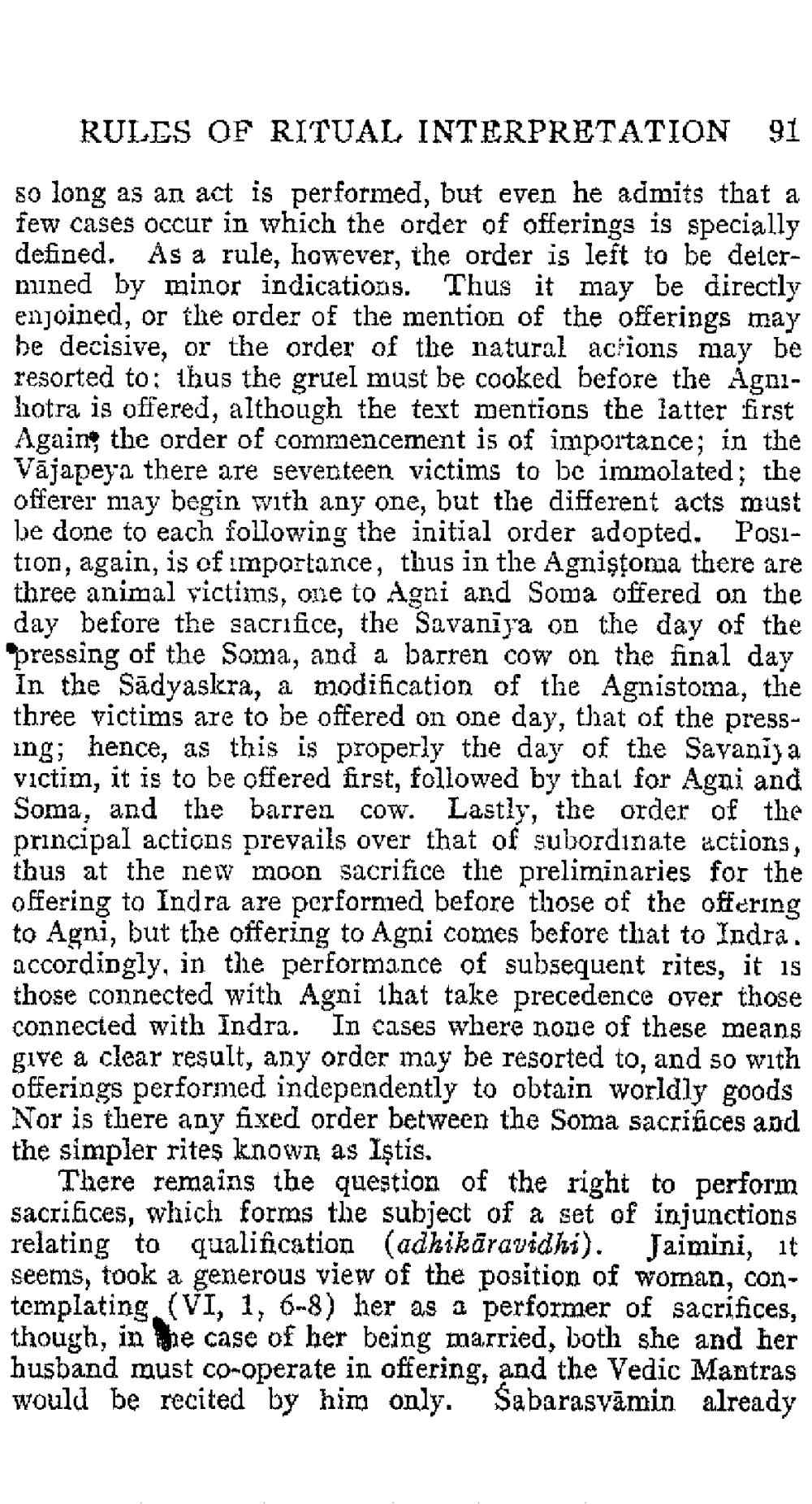________________
RULCS OF RITUAL INTERPRETATION 91
so long as an act is performed, but even he admits that a few cases occur in which the order of offerings is specially defined. As a rule, however, the order is left to be determined by minor indications. Thus it may be directly enjoined, or the order of the mention of the offerings may he decisive, or the order of the natural actions may be resorted to: thus the gruel must be cooked before the Agolhotra is offered, although the text mentions the latter first Again, the order of commencement is of importance; in the Vājapeya there are seventeen victims to be immolated; the offerer may begin with any one, but the different acts must be done to each following the initial order adopted. Position, again, is of importance, thus in the Agniştoma there are three animal Fictims, one to Agni and Soma offered on the day before the sacrifice, the Savanīja on the day of the pressing of the Soma, and a barren cow on the final day In the Sadyaskra, a modification of the Agnistoma, the three victims are to be offered on one day, that of the pressing; hence, as this is properly the day of the Savaniya victim, it is to be offered first, followed by that for Agai and Soma, and the barrer cow. Lastly, the order of the principal actions prevails over that of subordinate actions, thus at the new moon sacrifice the preliminaries for the Offering to Indra are performed before those of the offering to Agni, but the offering to Agni comes before that to Indra. accordingly, in the performance of subsequent rites, it is those connected with Agni ihat take precedence over those connected with Indra. In cases where none of these means give a clear result, any order may be resorted to, and so with offerings performed independently to obtain worldly goods Nor is there any fixed order between the Soma sacrifices and the simpler rites known as Iştis,
There remains the question of the right to perform sacrifices, which forms the subject of a set of injunctions relating to qualification (adhikäravidhi). Jaimini, it seems, took a generous view of the position of woman, contemplating (VI, 1, 6-8) her as a performer of sacrifices, though, in the case of her being married, both she and her husband must co-operate in offering, and the Vedic Mantras would be recited by him only. Sabarasvāmin already




